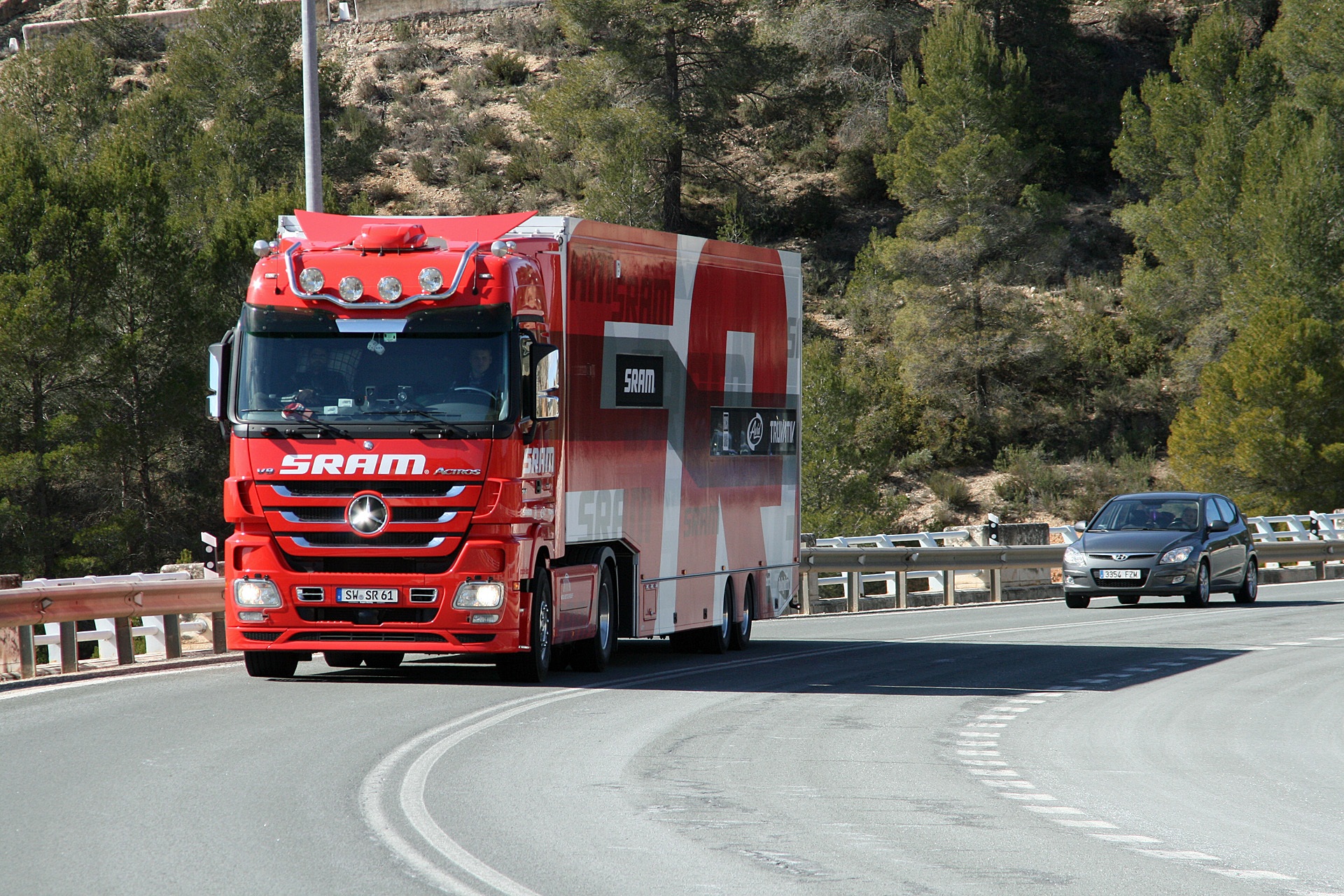
Tell our Transport Minister we need safer lorry design now, not in 12 years time
To understand the grievous concerns about the safety of lorries on our roads you only need look at their record in my country, Britain. HGV accidents, especially those involving cyclists, are a key issue for transport in the UK at the moment. In London, lorries were involved in over half of cyclists' deaths even though they only made up 5% of traffic in both 2011 and 2012. HGVs were involved in 51% of fatal collisions on UK motorways – even though they only made up 11 per cent of motorway traffic in 2012.
Interested in this kind of news?
Receive them directly in your inbox. Delivered once a week.
So naturally EU politicians, including UK ministers, in principle support safer, more aerodynamic HGV cab designs, which can save hundreds of lives. This makes it all the more disheartening to see that France and Sweden, are trying to delay the lifesaving new designs until after 2025 following pressure from their truck manufacturers.
There is no justification for this moratorium, as the new designs will be implemented on a voluntary basis. Truck makers wouldn’t be forced to build new designs but would be given the opportunity to use the much-needed extra design space to provide their customers with a better product. But it would appear that Volvo and Renault, who are leading the push for delaying the new designs, don’t want competitors to develop new models before they do.
The revision of this legislation is needed to allow for the extra cab space to facilitate the new cab designs that would not only be safer but also more fuel efficient and more comfortable for drivers. Current EU rules on weights and dimensions of HGVs have indirectly restricted the length of cabins to 2.35 metres, which explains why today’s cab design forces the driver to sit on top of the engine in such a high position that much of what happens around the cab is invisible to them. Redesigning lorry cabs to reduce these blind spots could save hundreds of cyclists’ and pedestrians’ lives every year, according to a study by Loughborough University which found this ‘direct vision’ lorry concept would increase the driver’s field of view in front and to the sides of the lorry by 50%. This 80cm longer cab with a rounded nose, smaller dashboard, expanded glazed areas and a slightly lower driver position is supported by an alliance of 22 organisations, including the Mayor of London, the Freight Transport Association, Transport for London (TfL), cycling, local authority and road safety organisations [3].
There is still time to stop this unjustifiable delay. The final negotiations between Member States and the European Parliament commenced on 22 October and are likely to last until early December. Both the European Parliament and Commission want the new designs allowed by 2017/2018, which allows sufficient time to develop the technical requirements for new designs. However, in its political agreement, Member States suggest new designs should be banned until 2025-2028.
More lives will be needlessly lost if the introduction of new designs is delayed, so it is inexcusable to delay these modifications and the UK should not have accepted this agreement. With that in mind, 13 UK industry, transport and safety experts organisations have written to the UK Government to team up with other countries and stop the delay. They are Campaign for Better Transport, RoadPeace, See Me Save Me, British Cycling, Institute of Mechanical Engineering, Living Streets, Institution of Civil Engineers, Skanska, O’Donovan Waste Disposal, SIG PLC, Road Death Reduction Forum, FM Conway, and Kayleigh Plant Hire Limited. The Freight Transport Association is also now supporting our growing campaign.
How can you get involved? Join our email action here and write to the UK Transport Minister. Tell him no more lives should be lost due to needless delay.
Notes:
[1] London cycling fatality statistics from TfL & Parliamentary Question from Sadiq Khan January 2014
[2] Traffic statistics table TRA0104, Accident statistics Table RAS 30017, both DfT published 2013 for 2012 figures
[3] https://www.transportenvironment.org/sites/te/files/publications/2014%200…
